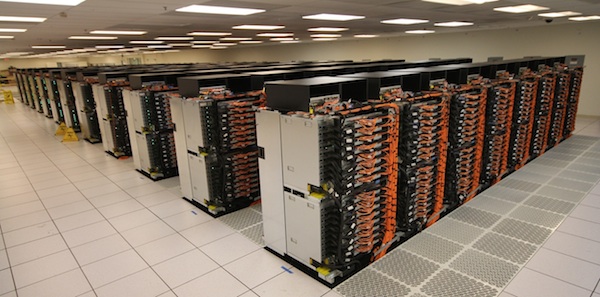 I’ve been out of the lime light for the last few months. I’ve been able to spend time with our family’s newest edition, Jacob and one of my first technology loves, Linux. We just finished updating every storage system used by Byte Harmony for hosting our data and our cloud hosting systems to use a system called ZFS.
I’ve been out of the lime light for the last few months. I’ve been able to spend time with our family’s newest edition, Jacob and one of my first technology loves, Linux. We just finished updating every storage system used by Byte Harmony for hosting our data and our cloud hosting systems to use a system called ZFS.
ZFS is a storage system originally created by Sun now owned by Oracle. Recently ZFS has made news both as the storage system used in the fastest computer system in the world, the Sequoia (Shown above, Info on Sequooia and a Video with a technical deep dive). We use both the supercomputer ZFS system and a ZFS system provide by Nexenta.
ZFS is a storage system that allows us to:
- Assure data integrity by using checksum, a data integrity signature, on every byte of data.
- Store data on multiple hard drives multiple times. We store data using ZFS multiple times so that if a single copy of the data is corrupted for any reason (drive failure, bad sectors, head crash, etc) data remains available.
- Compress data stored on hard drives to increase system speed and reduce data storage space. Today’s modern CPU is so fast that it can compress data and store less of it faster than it can store a large amount of data. For this reason most of our data is compressed in the ZFS system.
- Deduplicate data that is stored many times. When storing data sets that contain the same data over and over again deduplication is used to keep only a single physical copy stored even though the system using the storage system sees multiple copies.
- Store data on multiple hosts so if a single system fails systems can recover without needing to copy data out of a backup device.
Combining the above benefits (and a few more) results in a system that can be restored instantly rather than the minutes, hours, days or weeks it can take to restore data using tape and hard drive based backups.
Best of all I’ve been able to put together a technology solution with ZFS that allows us to use the same storage technology to provide storage solutions to small offices as I would for large corporations. This means training my staff on a single technology used on all clients. Lower costs, higher quality and better systems are the goals of most companies who use Autotask. So from that perspective, ZFS is an Autotask thing J.
With ZFS systems in place our engineering attention shifted to the virtualization sphere. Server 2012 is about to be released so a new wave of projects will surely ensue. Surely Hyper-V will get a chunk of that work, as will VMWare, however, the new kid on the block is making waves. That new kid is KVM. I’ll write more about our current progress with KVM and a new product we will be delivering in future articles as well as covering some new areas of Autotask.
